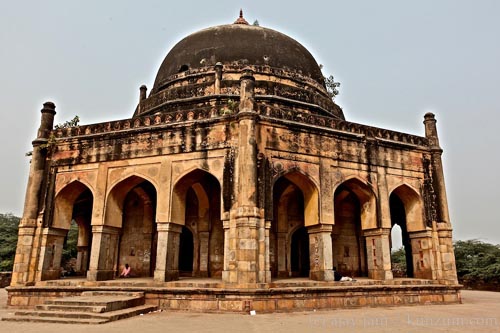Jahanpanah

Information on Jahanpanah (New Delhi) - History & Architecture
Jahanpanah is known to be a medieval city or town of Delhi which was supposed to be the fourth city of its kind and was developed by the emperor, Muhammad bin Tughlaq during the time period of 1326 to 1327. Jahanpanah is Persian language means "Refuge of the World". The planned and protected city, Jahanpanah was established in order to deal with the continuous intimidations given by the Mongols. The secured city was built by Tughlaq after the close consideration of Adilabad fort which was developed during the 14th century along with the inclusion of all such kinds of constructions or buildings between Siri Fort and Qila Rai Pithorat, the initial two cities. However, sadly neither the fort nor the city that is Jahanpanah is known to have survived. Numerous reasons were cited for the cause of such a condition. Among many, one of the rationales have been stated to be the eccentric and peculiar manner of rule of the emperor, Mohammed bin Tughlaq when the capital was moved to Daulatabad in the state of Maharashtra without any explanation and was again shifted back to Delhi just after.
Jahanpanah Architecture
The city, Jahanpanah was constructed according to the Toghluqi pattern of architecture. The area of the city was known to stretch over acres and consisted of the Alidabad Fort which was developed in the 14th century. Any traces of the fort or the city, Jahanpanah can hardly be found presently, apart from few of the remains which were later identified to be of the Bijay Mandal region. The walls of Jahanpanah made from stone have currently been moved away over lengthy stretches owing to the forceful factor of city expansion needs with regard to Delhi's residential areas. The walls are observed to go beyond the road from Delhi to Mehrauli which is at a distance of 14.5 kilometres from Delhi. The walls of the Jahanpanah city can be spotted at numerous points for instance towards the northern side of the well known Indian Institute of Technology, towards the southern part of Khirki mosques and towards the northward side of Begampuri, near to the Hauz Rani Gate of the famous Qila Rai Pithora, towards the north side of Chiragh-Delhi which is at Satpula.
Jahanpanah History
The ambiguity as well as the history of the private grounds of Jahanpanah eventually got revealed with the passing years and also with the constant excavations in the recent times. The excavation process unfolded a huge number of structures in the colonies as well as villages of South Delhi. However, owing to the reason of population explosion and the need to extend the residential areas of Delhi, Jahanpanah has now become a section of the posh city development with regard to South Delhi. The village along with the assets of the remains spread all over have recently been covered by the suburbs of South Delhi such as Malviya Nagar, Aurobindo Ashram, Panchsil Park South and Adchini doubled with the other housing developments. It can be well inferred from the area of the stone walls that they were considerably huge and competent enough to include quite a few store rooms built inside for the purpose of piling armoury as well as provisions.
The name of the city was derive from Persian language and the etymology comprises two Persian words and they are Jahan which means "the world" and Panah meaning "shelter" and is thus, known as "Refuge of the World".
Jahanpanah Tourism Significance
The remains of the city, Jahanpanah attracts huge crowd owing to its reputation of being 700 years old. The remains include historically fascinating and enthralling facts as well as structures such as the exceptional features of a mosque along with the procedures related to water planning that existed during the 14th century.
- Andaman Nicobar Monuments
- Andhra Pradesh Monuments
- Assam Monuments
- Bihar Monuments
- Chhattisgarh Monuments
- New Delhi Monuments
- Goa Monuments
- Gujarat Monuments
- Haryana Monuments
- Himachal Pradesh Monuments
- Jammu and Kashmir Monuments
- Karnataka Monuments
- Kerala Monuments
- Madhya Pradesh Monuments
- Maharashtra Monuments
- Odisha Monuments
- Punjab Monuments
- Rajasthan Monuments
- Tamil Nadu Monuments
- Telangana Monuments
- Uttar Pradesh Monuments
- West Bengal Monuments